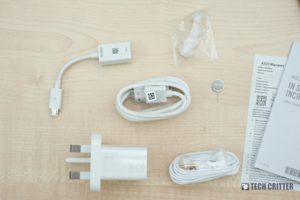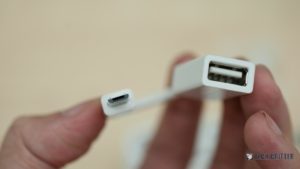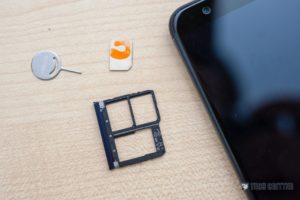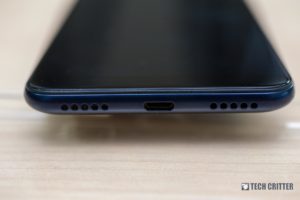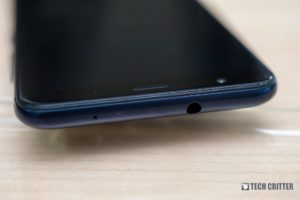When ASUS announced the ZenFone Max Plus (M1) during December of 2017, we silently said “finally!”, because ASUS is finally jumping into the 18:9 FullView display bandwagon. However, ASUS did not just jump in blindly – they meticulously crafted the Max series to be their first smartphone to don the FullView display – and hence, the ASUS ZenFone Max Plus (M1) was born.
It’s a smartphone made for those who seek a smartphone that has a large screen with an aspect ratio of 18:9 and large battery – but how well does it fair out in our day-to-day usage? Let’s find out in this review.
Specifications
| CPU & GPU | MediaTek MT6750T 28nm (8x Cortex-A53 @ 1.5 GHz) Mali-T860MP2 graphics |
| RAM | LPDDR3 4GB |
| Storage | 32 GB support up to 2 TB MicroSD card |
| Display | 5.7-inches FullView display 720p FHD IPS LCD |
| Camera (rear) | 16 MP, 35mm f/2.0, PDAF 8 MP, 16.7mm |
| Camera (front) | 16MP, 35mm f/2.0 |
| Battery | 4,130mAh |
| Operating System | Android 7 Nougat ZenUI 4.0 |
| SIM | Dedicated Dual SIM (Nano + Nano + MicroSD) |
| Connectivity | GSM / HSPA / LTE Wi-Fi 802.11 b/g/n, Bluetooth 4.0 GPS with A-GPS, GLONASS |
| Features | Rear fingerprint scanner |
Unboxing
Looking at the box itself, the ASUS ZenFone Max Plus (M1) has a rather simplistic design. Blue background with the phone printed in a way that Gong Yoo gestured during the ZenFone 4’s launch in Taiwan last August.
Sliding the sleeve off reveals a box that houses its one and only item inside – the included TPU case. Beneath that box is the ZenFone Max Plus (M1), and underneath the phone are the accessories. Surprisingly, ASUS included an ample amount of accessories in the box.
In total, you’ll get the the usuals – a charger, a micro USB cable, a pair of earphones alongside with 2 different sizes of eartips, user guide, warranty information, the aforementioned TPU case, and also an OTG cable.
The ASUS ZenFone Max Plus (M1)
Looking at the ZenFone Max Plus (M1), the first thing you’ll realize for sure is the screen. ASUS finally has a smartphone in their lineup that has the FullView display. For those who don’t know what FullView display is – it’s the name we’ve come to use to call those 18:9 aspect ratio displays in smartphones.
ASUS is actually quite late into the party. We first saw smartphones with elongated screens on the Samsung Galaxy S8/S8+ and the LG G6. Then, other smartphone brands start to have such displays, and it took ASUS about 9 months to release a smartphone with 18:9 aspect ratio into the market for consumers.
With that said, ASUS’s 1280×720 pixels 18:9 – empirically it’s 2:1 – FullView display looks alright. It’s certainly bright enough, but the colors are a little washed out compared to the best IPS LCD screen that I’ve seen.
As the display gets larger and the screen-to-body ratio gets higher, there really isn’t much space to stuff all the other electronics like sensors, earpiece, and selfie camera. That’s why all smartphones with FullView display has gone away with physical capacitive keys in favour of on-screen buttons. Should’ve done it long ago, as on-screen buttons offer a lot more flexibility through software.
It’s quite a departure from ASUS’s ZenFone 4 Selfie Pro that we reviewed here, to be honest, though the back of the ZenFone Max Plus (M1) remains more or less similar with the other ZenFone 4 Max series of smartphones.
The fingerprint scanner has been moved to the rear and properly positioned for the natural hand grip. Up above at that corner is where the dual-camera setup is found – which leads us nicely into the next segment of this review.
Screen
As we just mentioned, the 18:9 screen is a total change from what we’re used to. Seriously, by increasing just a little in height, it might not seem much. However, the change in user experience is just significant.
Though ASUS only used a 720p 18:9 display for the ZenFone Max Plus (M1), it still looks rather decent. ZenUI did have a few changes to accommodate the new changes, too. ZenUI now has features to control app scaling and it works pretty well, too. Most of the apps we used on the ZenFone Max Plus (M1) is already able to scale to the 18:9 aspect ratio properly.
Let’s not forget that the new ZenUI also has rolling screenshot – you can take a super long screenshot within a single image. Neat.
Cameras
While the ZenFone Max Plus (M1) is indeed a budget smartphone that touts its large screen with a large battery, they didn’t skimp out on the cameras. The amount of cameras, I mean.
The ZenFone Max Plus (M1) comes with two rear-facing cameras, one prime lens and another wide-angle lens. The prime has a 16MP sensor with f/2.0 35mm lens with PDAF, whereas the wide-angle has an 8MP sensor with 17mm lens – no autofocus. Quite common among smartphones with wide-angle lens, by the way.
As for the selfie camera, there’s an 8MP sensor with f/2.0 25mm lens.
Battery
Let’s have a talk about the battery. Of course, since the ZenFone Max Plus (M1) does have the Max moniker in the name. All of the ASUS’s ZenFone Max series of smartphones have large batteries – and the ZenFone Max Plus (M1) is no exception. It’s equipped with a 4,130mAh battery.
Throughout our battery life test, a fully charged ZenFone Max Plus (M1) can easily last for 10 hours+ of usage. Performance hiccup does occur, but it’s only noticeable on apps (games mostly) that requires more processing power.
The charger, however, is a little disappointing. Having a 5V 2A charger, it takes up to 3 hours+ worth of charging time to get the phone fully charged to 100% from a near flat battery level. Though, since the ASUS ZenFone Max Plus (M1) is meant to be a budget smartphone after all, the price does justify the slower charger.
Verdict
Honestly, the ASUS ZenFone Max Plus (M1) isn’t really a beast when it comes to performance – it is a budget oriented smartphone after all. However, its 18:9 aspect ratio display and huge battery life is what makes the ZenFone Max Plus (M1) worth to be considered.
As a new addition to the Max series, it does live up to the name with its impressive battery life. As someone who rarely travels with power bank, the 10 hours+ worth of battery life and reverse charging capability of the ASUS ZenFone Max Plus (M1) is what I value the most.
Pros
- SIM card slot with dedicated dual SIM and MicroSD slot
- Very good battery life
- Reverse charging capable
- Reasonable price
Cons
- Slow, mediocre camera
- Slow charging speed



